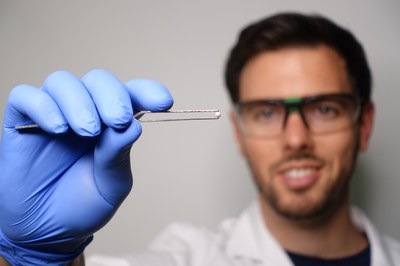Efficient hydrogen release via nucleation: Important knowledge for the transport of green hydrogen
Researchers of the Helmholtz Institute Erlangen-Nürnberg for Renewable Energy (HI ERN) and the department of chemical and biological engineering found out that the hydrogen release rate can be significantly increased in the case of easy gas bubble formation inside of catalyst pores. This knowledge will allow for the optimization of the transport of green hydrogen.
Liquid organic hydrogen carriers (LOHC) are important for future applications of green hydrogen. Catalyst pellets are used to release the hydrogen from LOHC. The released hydrogen can then be converted to electric energy e.g. in fuel cells. The teams of Prof. Dr. Jens Harting, Prof. Dr. Matthias Thommes, Prof. Dr. rer. nat. Nicolas Vogel and Prof. Dr. Peter Wasserscheid now found out that more hydrogen can be released if gas bubbles are build more easiliy inside of the catalyst pores. The nucleation of gas bubbles can be induced via chemical modification of the catalyst surface or with a mechanical impulse.
The results were recently published with the title „Nucleation as a rate-determining step in catalytic gas generation reactions from liquid phase systems“ in the journal Science Advances.
